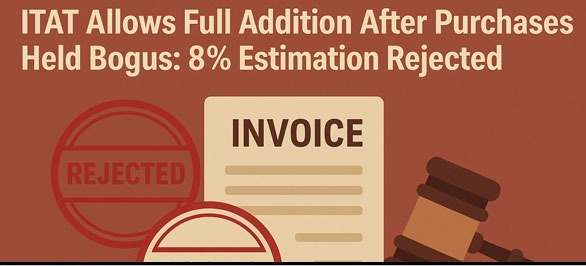Hemant Gupta, J.@mdashDefendant State of Punjab is in Regular Second Appeal against the judgment decree passed by 1st Appellate Court in a suit for possession filed by the plaintiff-respondents.
2. Plaintiffs in Suit No. 127 of 20th February, 1978 purchased property bearing No. B-II-S-21-16/B&C measuring 50x25, whereas, plaintiff in Suit No. 126 of 20th August, 1977 purchased property bearing No. B-II-21/16A measuring 50-2"x25. Both these properties were put to public auction by the Managing Officer (Sales) Jalandhar on 3.2.1964 and the plaintiffs were successful bidders for the purchase of the said property. A sale certificate was issued to the plaintiffs.
3. It is further the case of the plaintiffs the Punjab Government was running a Government Primary School in the rooms shown in the site plan attached and room in Suit No. 127 was given to the Education Department on rent, but the officials of the School failed to pay the rent. The Rent Petition was filed in the Court of Rent Controller, but the same was withdrawn, in view of the fact that the Education Department denied the relationship of the landlord and tenant and alleged that the department itself is owner of the suit property. In view of the aforesaid, the plaintiffs filed the present suit for possession.
4. The defendant filed written statement and alleged that before the suit property was auctioned in favour of the plaintiffs, the State Government had already purchased the suit property together with the adjoining plot on payment of Rs. 8100/- paid to the Regional Settlement Commissioner and thus the plaintiffs have no right to file the suit and Managing Officer (Sales) has no interest which could be put to public auction which is said to be purchased by the plaintiffs.
5. The Regular Second Appeal No. 548 of 1983 arises out of Civil Suit No. 127 of 1978, whereas Regular Second Appeal No. 549 of 1983 arises out of Civil Suit No. 126 of 1977. Since identical question of law and fact arise in both these suits, thus, both these appeals are being disposed of by the present common order.
6. The following substantial questions of law which arises for consideration are:
1. Whether the property in dispute was sold to the State Government prior to 31st of March, 1963 and thus Rehabilitation Department through the Managing Officer (Sales) has no interest in the suit property to put in public auction?
2. Whether Stat is required to prove its title on the basis of document of title such as conveyance deed?
7. For the sake of facility, the facts are taken from the records of Civil Suit No. 127 of 1978.
8. The plaintiffs have produced letter of allotment dated 29th of September, 1996 Ex., in respect of property No. B&C. It has been endorsed therein "that the site only has been sold the super structure belongs to Punjab Government." The sale certificate produced as Exh. All, wherein in schedule of the property, it is mentioned that site only has been sold after scoring the word construction. The plaintiffs claimed that on the basis of such letter of allotment and the sale certificate, they are the owners of the site and thus entitled to the possession. On the other hand, the State has relied upon receipt Exh.DA, wherein it is mentioned that a sum of Rs. 8100/- have been withdrawn from the account of the State Government vide cheque No. 695957 for payment to Regional Settlement Commissioner on account of cost of property No. B-II-S-21/16. The defendants also produced letter dated 16th of August, 1966 as Ex.DW4/l from the Tehsildar (Sales) Hoshiarpur to the Managing Officer (Sales) Jalandhar to the effect that property No. 16A, 16B and 16C have wrongly been sold to Shri Shadi Lal S/o Ram Lal & Ram Lal S/o Sukh Ram respectively. These are the properties which have already been transferred by negotiation to the Government Girls Primary School Kacha Toba (Hoshiarpur). The said letter read as under:
"From The Tehsildar (Sales),
Hoshiarpur.
To The Managing Officer (Sales),
678-Model Town, Jullundhur.
No. 3312 TSH dated 16.8.1966
Sub: Verification of property No. B-II-S-21/16A, 16B, 16C of Hoshiarpur Town.
Memo:
Reference Your letter No. Nil dated 9.8.66 on the subject cited above.
The spot verification has been made according to the Line-Plan supplied by your office. The factual positions that property No. B-II-S-21/16A and B-II-S-21/16B and 16C have wrongly been sold to Shri Shadi Lal S/o Ram Lal & Ram Lal S/o Sukh Ram respectively. These are the same properties which have already been transferred by negotiation to the Government girls Primary School Kacha Toba (Hoshiarpur) the No. given in the transfer transaction is B-II-S-21/16. The transfer was effected prior to the sale proceeds hence the later sales require cancellation.
It is therefore, requested that the action cancellation be taken according with intimation to this office.
Sd/-
Tehsildar (I)
Hoshiarpur.
No. 3313-A TSH of 16.8.1966
A copy to the District Attorney, Hoshiarpur for information. The Government Primary School will be put into possession after the cancellation orders are passed from the R.S.C. Jullundur.
Sd/-
Tehsildar (Sales)
Hoshiarpur
11.8.1968"
9. The learned Trial Court dismissed the suit holding that the State Government had purchased property in dispute by relying upon the letter Exh.DW4/l. However, the 1st Appellate Court decreed the suit by observing that no document of title has been produced by the defendant and that payment of money does not create title. In respect of letter Exh.DW4/1, it was stated that the number given in transport transactions B-II-S-21/16, whereas the property purchased by the plaintiffs is B-I-S-21/16A, B & C, which are distinct properties and thus granted decree for possession.
10. Shri Ashok Bhardwaj, Assistant Advocate General, Punjab argued that the defendant has purchased the complete property bearing No. B-II-S-21/16, whereas the said property was put to auction in parts and assigned numbers as 16A, 16B and 16C. Therefore, the distinction drawn by the learned 1st Appellate Court is wholly illegal and without any justified reason. A perusal of the letter Exh.DW4/l itself shows that it is the same property which has been sold by negotiation to the State and the said property was put to public auction. Even otherwise, the Rehabilitation Department has no salable interest in such property. Therefore, the finding recorded by the 1st Appellate Court that the property purchased by the plaintiffs is distinct from the property which is claimed to have been sold by negotiations to the defendant is not sustainable.
11. Letter Exh.DW4/l has been produced by the Office of the Deputy Commissioner. Shri Sudarshan Kumar, Accountant of the Deputy Commissioner has appeared as DW5 and deposed that the copy of the letter was sent to District Attorney, Hoshiarpur as well, such letter has been produced by the officials who have kept such record in the normal and in due course of their duties. In view of the said letter, it is apparent that the property was purchased by the State Government by negotiations prior to the sale of the property by public auction in favour of the plaintiffs.
12. The defendant has further proved the payment of sale consideration. It has proved the withdrawal of sum of Rs. 8100/- from the bank account vide counter-foil Exh.D2 and also proved receipt regarding payment to Regional Settlement Commissioner. Therefore, there is nothing on record to show that the State Government has not made the payment to the Regional Settlement Commissioner. The plaintiffs have not led any evidence to rebut the evidence led by the defendant.
13. The reasoning given by the courts below that no document of title has been produced is not tenable in law. The provisions of transfer of Property Act are not applicable if the transfer of the property is by the Government in terms of the provisions of Section 2 of the Government Grants Act, 1895, which reads as under:
"2. Transfer of Property Act, 1882, not to apply to Government grants.- Nothing in the Transfer of Property Act, 1882, contained shall apply or be deemed ever to have applied to any grant or other transfer of land or of any interest therein heretofore made or hereafter to be made (by or on behalf of the (Government)) to, or in favour of, any person whomsoever, but every such grant and transfer shall be construed and take effect as if the said Act had not been passed."
14. Therefore, the sale deed which is required to be executed in terms of Section 54 of the Transfer of Property Act for conveyance of title is not a necessary precondition for conveying of title if the transfer is by the Government.
15. Similarly, by virtue of provisions of Section 17 of the Registration Act, 1908, any grant of immovable property by the Government is not required to be compulsorily registered in terms of provisions of Section 17(2)(vii) of the Registration Act, 1908. Therefore, the conveyance or sale deed is only an evidence of title. The State Government has led sufficient evidence to prove the transfer of property in its favour by the Rehabilitation Department prior in time than the public auction in which the plaintiff was found successful. Since the land was already transferred to the Punjab Government, Managing Officer, Sales, has no salable interest in such property Therefore, the finding recorded by the first appellate court is not legally sustainable that the State Government has failed to prove its ownership on account of absence of any document of title. Therefore, the second substantial question of law is also answered in favour of the appellant.
Consequently, both the appeals are allowed and the judgment and decree passed by the 1st Appellate Court is set aside and the suit filed by the plaintiff-respondents is dismissed.

